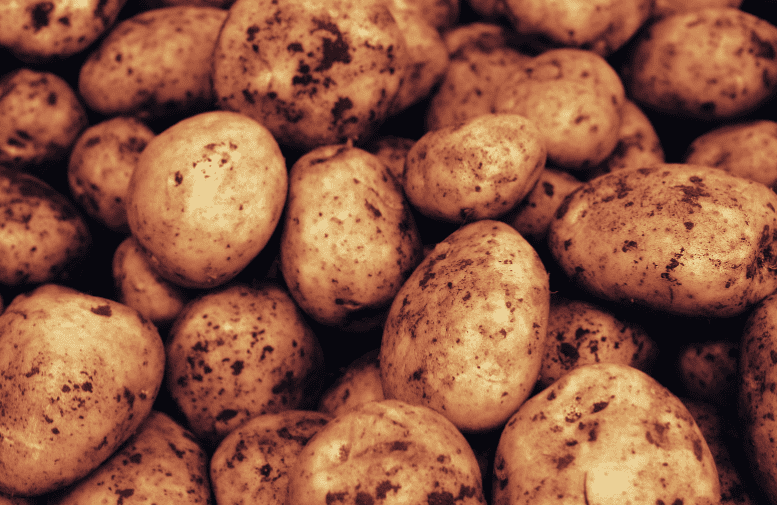Maincrop Potatoes
Quantity is the main thing when growing potatoes for roasting, boiling, mashing, chipping, or baking.
So, how do you ensure high quality and yields?
The Ideal Locations For Spuds
Assign your potatoes to a sunny, open location; because they are tender, they enjoy the warmth, and good airflow will keep the humidity at bay, which promotes late blight.
Unlike many vegetables, slightly acidic soil is preferred, so avoid limeing bare beds in early spring.
Ample fertilizer, particularly phosphate and nitrogen, is required for excellent maincrop potato yields. Non-organic growers could use ammonia sulfate (for nitrogen) and superphosphate at planting and again when earthing up.
Organic gardeners can substitute fish, blood, and bone. Traditional row spacing is also important, 14in (35cm) is standard, but go wider on light soils if possible to avoid drought and get the largest tubers. If you plant too close together in any soil, your tubers will be small.
Protection For Potatoes
Early leaf cover is critical for high yields, and tuber bulk is proportional to leaf surface area at the marbling stage (when tubers just begin to form).
To create a dense canopy, protect the foliage from late frosts and water during dry spells. Weed control is no longer required once this stage is reached.

Lay straw or mulch around no-bed systems; otherwise, in the early stages, earth up rows.
Then just keep the irrigation going, with the goal of allowing maincrops to grow well into the autumn when they’ll put on that all-important weight.
Three Best Ways To Grow Spuds
■ In rows: This is the traditional way to set out your spuds, and ideal if you’ve plenty of room.
Simply dig a trench 12in (30cm) wide and 6in (15cm) deep, setting a line of tubers down the middle. Rake over into a slight ridge once planted.
■ In beds: If space is a bit tight but you’ve allocated beds for potatoes, plant in triple or even quadruple staggered rows.
No-dig gardeners can adopt this method, planting through their organic mulch, and it’s easiest to plant with a trowel.
■ In bags: Bags are for those who have no beds at all! You can expect less pest damage in this way; you can even move bags undercover in high blight-risk spells.
Plant one tuber 6in (15cm) deep per 10-liter bag, or three per 30-liter bag. Use a 50:50 mix of soil and compost.
Best Methods To Avoid Key Spud Problems
Fight Late Blight
Very destructive, especially in warm, wet summers. Grow varieties with resistance (like the `Sarpo’ range, pictured) or, if growing non-resistant types, cut off all foliage to soil level if symptoms are seen and salvage uninfected tubers.
Prevent Scab
Common scab is more widespread than powdery scab (both cause unsightly skin blemishes and storage rots). Avoid very dry or very wet soils, and avoid liming before planting. Some varieties show specific resistance such as ‘Accent’ (pictured) or ‘Desiree’.
Stop Slugs
More troublesome when lots of compost is added to beds, and in wet summers. Lift tubers as soon as they have bulked up. Varieties vary in susceptibility, but ‘Charlotte’ (above), ‘Kestrel’ and `Stemster’ claim resistance.




























Comments are closed.